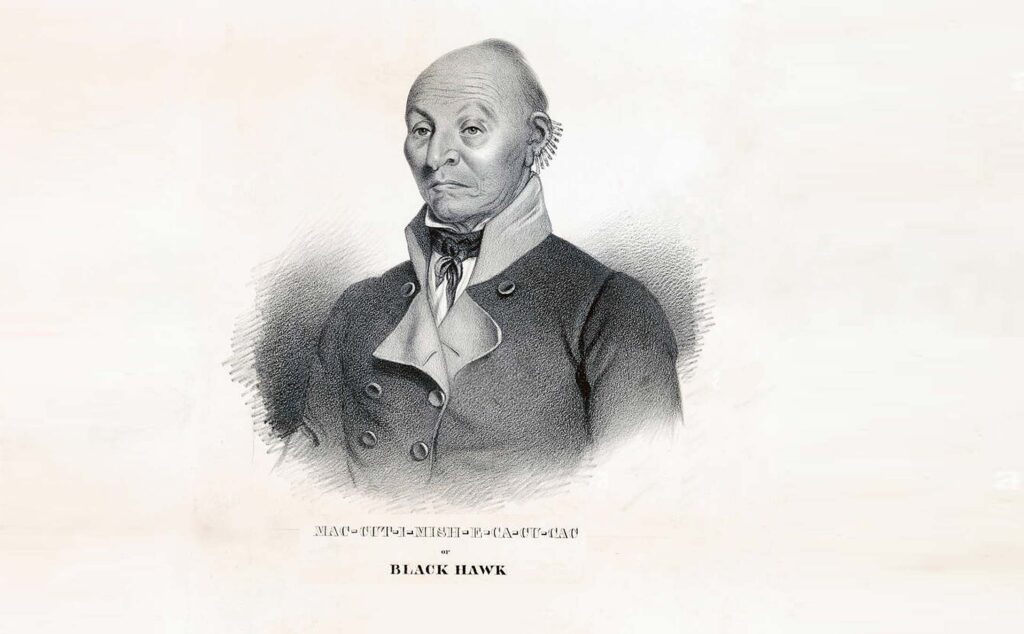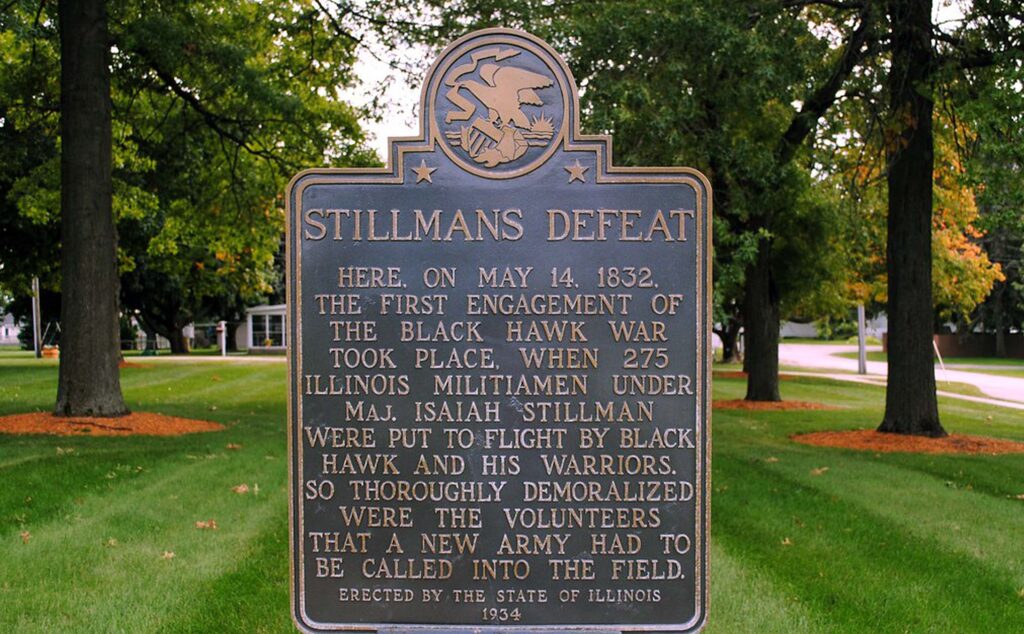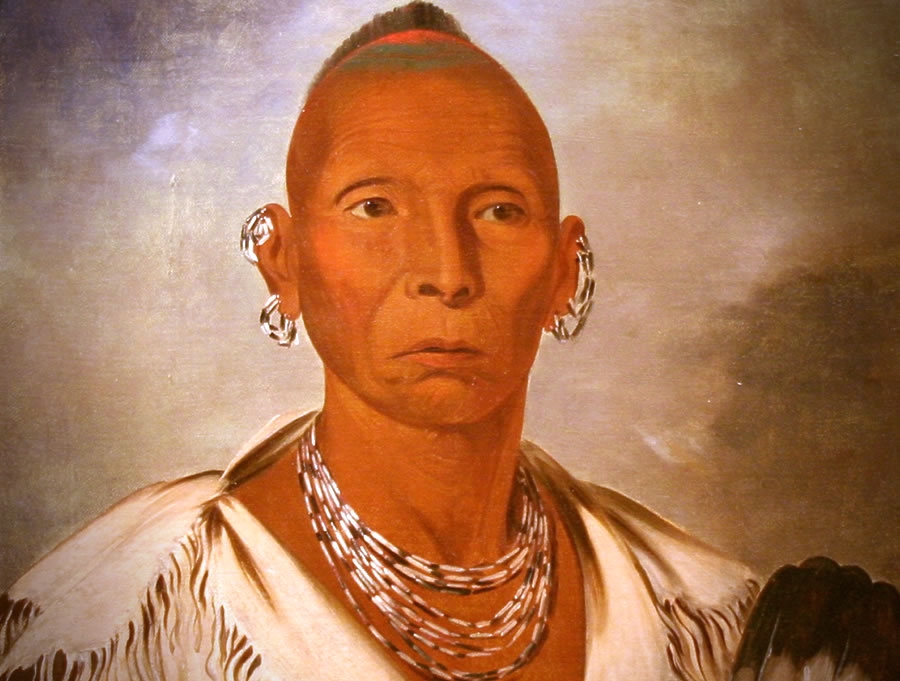Meet Black Hawk – our region’s namesake.
His given Sauk name was “Ma ca tai me she kia kiak,” but he was better known as “Black Hawk.”
Born in 1767 in the Sauk tribe village of Saukenuk — in what would later become northwestern Illinois — “Ma-ca-tai-me-she-kia-kiak,” which means “Black Sparrow Hawk,” would become one of the most feared, yet respected, Native American warriors. White settlers called him “Black Hawk,” and it is for him that our region — his former home — is so named.

The Sauk Nation
Feeling pressure from the French and Chippewa, the Sauk Nation migrated southward from central Wisconsin into southwestern Wisconsin, Northwestern Illinois, and northeastern Iowa. Some settled at the rapids of the Mississippi, near what is today Keokuk, Iowa. Another group settled near the mouth of the Rock River in Illinois. A third group settled on the Osage and Missouri Rivers in the late 1700s. The Sauk were allied with the Meskwaki (known to whites as the Fox) and often lived among them and vice versa. Principal native enemies of the Sauk included the Minnesota Sioux (Santee Dakota and Yankton Nakota), Osage, and Chippewa. At the age of just fifteen, Ma-ca-tai-me-she-kia-kiak joined a raid against the Osage. He succeeded in killing and scalping an enemy warrior, which entitled him upon return to Saukenuk to join in the scalp dance. At this early age, Black Hawk had become a Sauk warrior. A short time later, he led seven Sauk warriors in an attack against an encampment of 100 Osages. Ma-ca-tai-me-she-kia-kiak killed an enemy and escaped without losing a man. In a very short time, he became one of the most influential warriors in the Nation.
The Treaty of 1804
In 1804, certain Sauk and Meskwaki leaders signed a disastrous treaty. Under its terms, the Sauk and Meskwaki forfeited all of their lands adjacent to the Mississippi River in Illinois and Iowa. Most of the Sauk and Meskwaki people were outraged. White settlers soon began to move into the disputed area, and conflict seemed inevitable.
The War of 1812
When the War of 1812 began, Blackhawk and the Sauk fought for the British, no doubt viewing them as the lesser of two evils. Blackhawk’s warriors won battles at Campbell’s Island and Credit Island, but the British were ultimately defeated. With that defeat, the hope that the influx of white settlers could be checked was forlorn at best.

The Blackhawk War of 1832
The Sauk now lived in Iowa, having been forced west by the Americans. But the settlers wanted more land. In 1828, President John Adams demanded that the Iowa lands of the Sauk be sold. And when the Sauk returned from their winter hunt that same year, they discovered their lands had been sold again. Faced with the hostile Lakota, Dakota, and Nakota nations to the west, the Sauk faced east and sought to reoccupy their old lands. In April 1832, the Sauk re-crossed the Mississippi and returned to Illinois. In August, they were attacked by white militia. Black Hawk led the resistance, which was initially successful. His principal rival among the Sauks, Keokuk, remained aloof from the conflict.
NOTE: As a historical footnote, Abraham Lincoln, later to become the 16th President of the United States, and Jefferson Davis, later to become President of the Confederate States of America, both fought against the Sauk in the Blackhawk War. Likewise, the 12th President, Zachary Taylor, also fought against the Sauk. Ma-ca-tai-me-she-kia-kiak’s warriors were constantly outnumbered by Federal troops and militia. In addition to these forces, Sioux and Winnebago Indians served with the Federal troops.
For fifteen weeks, Ma-ca-tai-me-she-kia-kiak and the Sauk warriors held them at bay. Finally, the Sauk were cornered and defeated at the Battle of Bad Axe on August 2nd, 1832. Ma-ca-tai-me-she-kia-kiak and his son (Whirling Thunder) were made prisoners and shown around the country by President Andrew Jackson as spoils of war. The rest were removed to the “Indian Territory” in the west.
Ma-ca-tai-me-she-kia-kiak died on October 3, 1838, at the age of 71.

